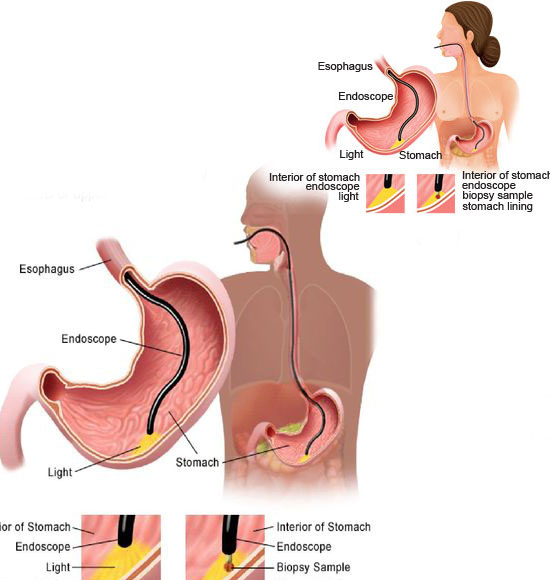About Endoscopic Biopsy

Biopsy of the small intestine is the standard way to diagnose celiac disease. This procedure is always performed by a gastroenterologist, and is conducted most often in an outpatient surgical suite. The procedure lasts less than an hour, and includes sedation and local anesthesia. The procedure involves a long, thin tube with a small camera on the end. The physician inserts the tube into the patient’s mouth, down the throat and into the esophagus. When the tube reaches the patient’s stomach the physician finds the entryway into the small intestine (the duodenum) and inserts the tube there. As the tube makes its way to the small intestine, the camera on the end sends a video image to a monitor. On the monitor, the physician can visually assess any gastritis, or other inflammation (such as inflammation of the lower esophagus due to acid reflux). In the small intestine, the physician examines the entire length of the duodenum, the area most likely to be affected by celiac disease. However, in many celiac patients, their duodenum appears normal at the time of biopsy. This is why the surgical removal of tissue is important, for it’s only under a microscope that a definitive diagnosis of celiac disease can be made. To biopsy, the physician inserts a tiny surgical instrument through the tube. It reaches the small intestine, and working in concert with a surgical nurse, the physician will biopsy 5-6 areas of the small intestine. The biopsy is taken by grasping very small sections of tissue and slicing them gently away from the walls of the intestine. Multiple tissue samples are vital to an accurate diagnosis—celiac disease can cause patchy lesions in the duodenum, which can be missed if only one or two samples are taken. Results of the biopsy will confirm if a patient has celiac disease. There are no nerve endings in the intestine, so this procedure does not cause pain. Afterwards, some patients experience a sore throat, but most have no memory of the procedure.
When a person is experiencing abdominal pain, weight loss, or unusual changes in stool, a doctor may order a gastric tissue biopsy and culture to help determine the cause of these symptoms. During the biopsy, a doctor takes a sample of stomach tissue and tests it for signs of infection. They usually test for Helicobacter pylori (H. pylori) bacteria which are a common cause of stomach ulcers and digestive problems. A doctor may also test the tissue for cancer.
Fast facts on endoscopy
- Endoscopies are quick and relatively safe procedures.
- The main reasons for endoscopy are investigation, confirmation, and treatment.
- Endoscopy can be used to remove tumors or polyps from the digestive tract.

